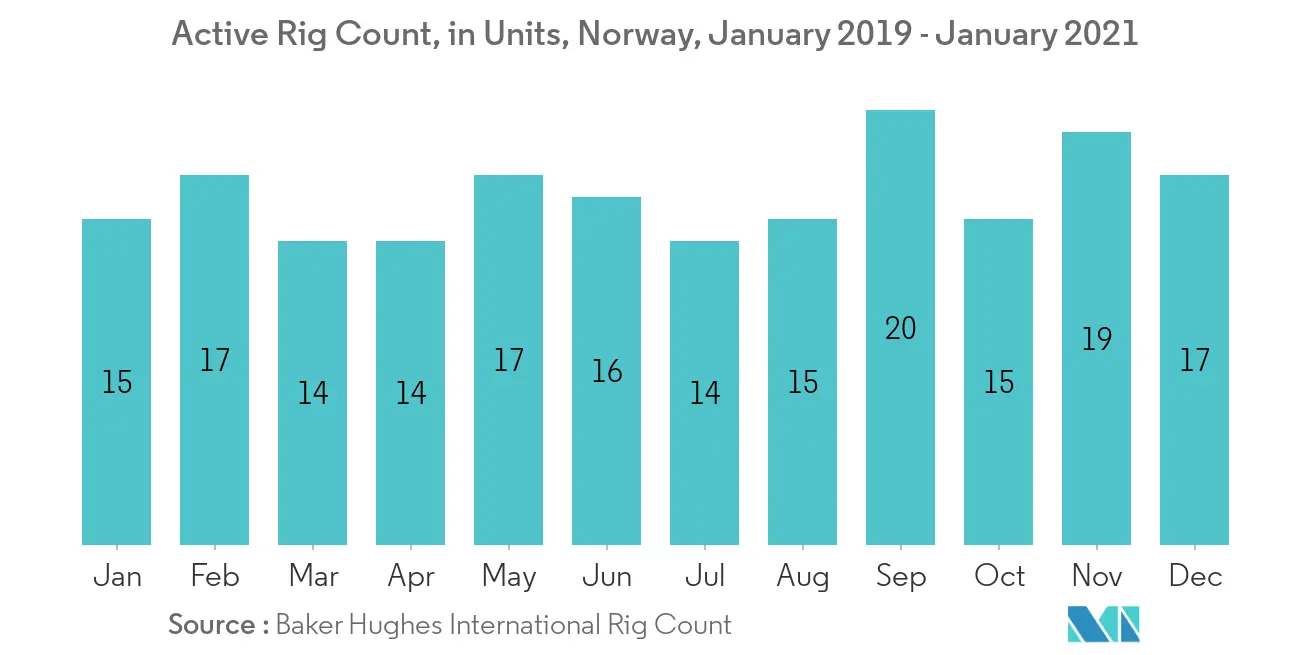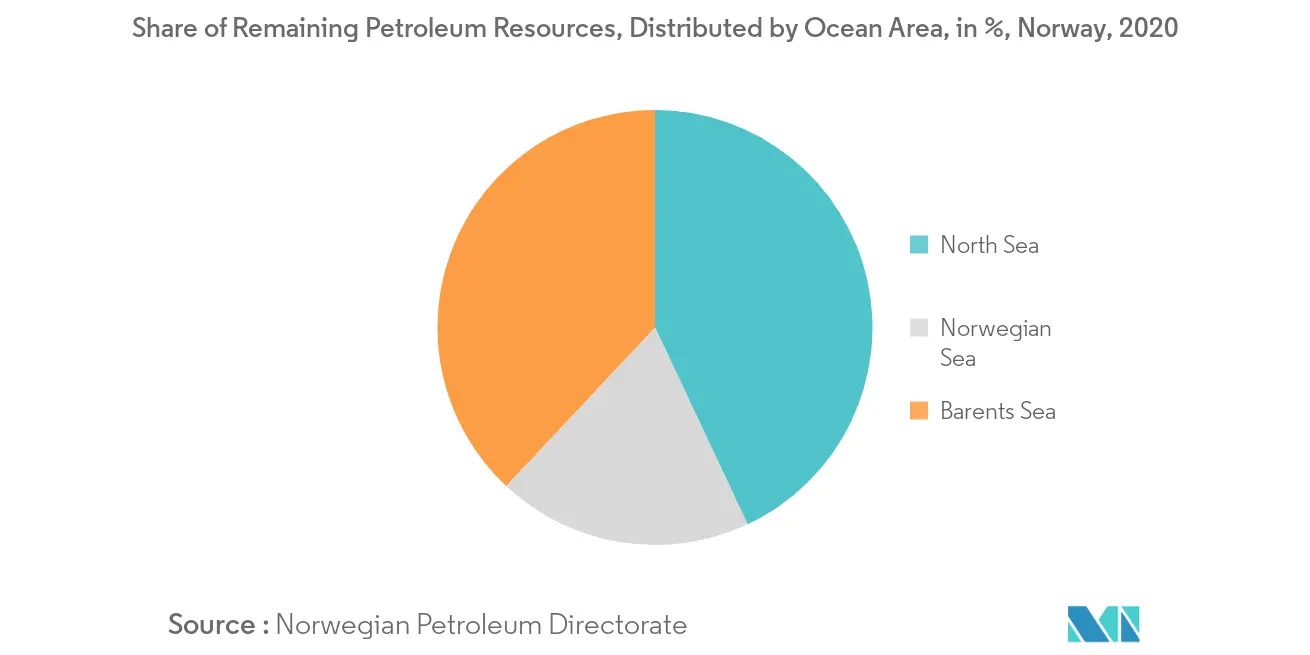Market Trends of Norway Oil and Gas Upstream Industry
This section covers the major market trends shaping the Norway Oil & Gas Upstream Market according to our research experts:
Development of New Oilfields to Drive the Market
- Norway is one of the largest oil producers and exporters in the European region. In 2019, the country's crude oil production was 1437 thousand barrels per day, which accounted for about 47.9% of Europe's total crude oil production. The average offshore rig count was 16 in 2020.
- The major oilfields in the country are reaching their maturity, and, as a result, since 2016, the oil production of Norway has declined significantly. However, in January 2021, about 30 companies have received offers of ownership interests in a total of 61 production licenses (34 are in the North Sea, 24 are in the Norwegian Sea, and three are in the Barents Sea) on the Norwegian shelf in the Awards in Predefined Areas (APA) 2020. Hence, with the award of 61 new production licenses, the upstream segment is likely to make more profitable discoveries on the Norwegian shelf during the forecast period.
- Moreover, Johan Sverdrup oilfield, the third-largest oil field on the Norwegian continental shelf, operated by Equinor, announced its plan to increase its daily production capacity up to 535,000 barrels of oil by mid-2021. Also, with expected resources of 2.7 billion barrels of oil, the field is one of the most important industrial projects in Norway for the next 50 years. Phase 1 of the field was opened in October 2019, and phase 2 is scheduled to begin production in the Q4 of 2022.
- Some of the major fields that are expected to come on stream during the forecast period are the Johan Sverdrup oilfield, Martin Linge, and Johan Castberg. Therefore, new upcoming discoveries of oil fields and expansion of existing oil fields are likely to reverse the trend and register significant growth in the market over the forecast period.

Availability of Oil Reserves to Drive the Market
- Norway holds the largest share in terms of total oil reserves among the European countries. According to the Norwegian Petroleum Directorate, there are around 8 billion standard cubic meters of oil equivalent (Sm3 o.e.) of resources (oil and gas) remaining on the Norwegian continental shelf (NCS), of which 52% (4.2 billion Sm3 o.e.) of resources are proven, as of February 2021. The production on the Norwegian shelf in 2020 was 229 million Sm3 o.e.
- Around 43% of the remaining resources are concentrated in the North Sea. The distribution of the rest indicates that 38% are in the Barents Sea and 19% are in the Norwegian Sea. In the Barents Sea, large parts of the remaining planned resources are not confirmed. At the end of 2020, there were 67 producing fields in the North Sea, 20 producing fields in the Norwegian Sea, and two producing fields in the Barents Sea.
- As of December 2020, the estimated total unproven resources were 665 million Sm3 o.e., 665 million Sm3 o.e., 2,505 million Sm3 o.e. in the North Sea, Norwegian Sea, and the Barents Sea, respectively. Hence, with plenty of proven and unproven resources in the country, the oil & gas upstream sector is likely to witness significant growth over the forecast period.

